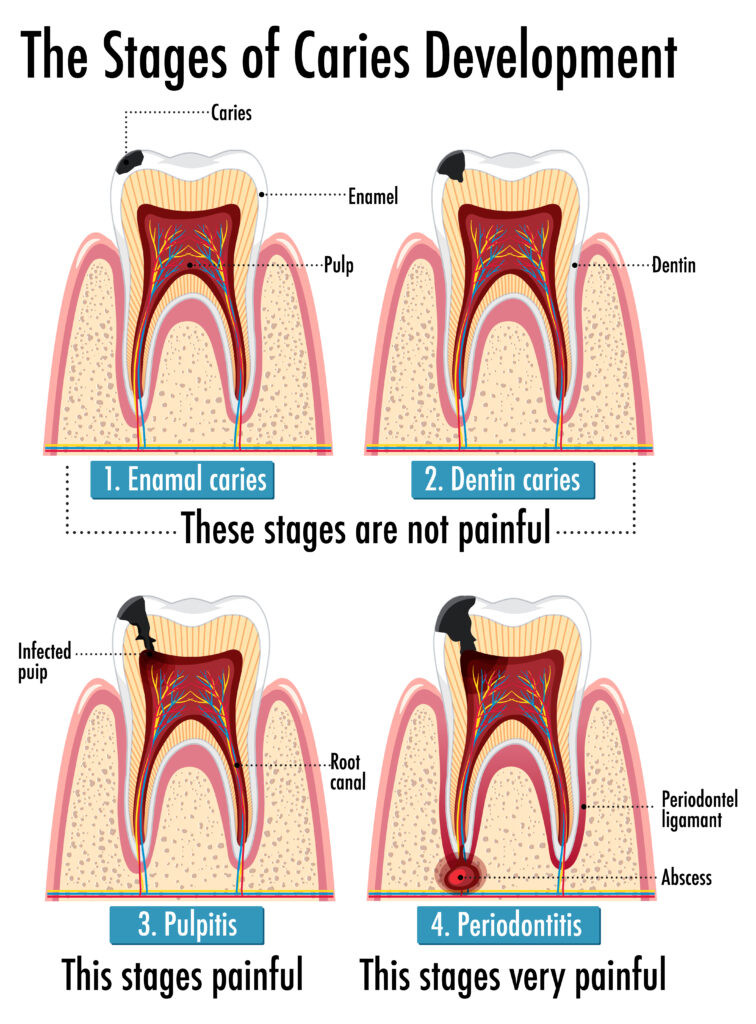Tooth Decay

Tooth decay, known as dental caries, is a widespread oral health issue affecting people of all ages worldwide. This condition arises from a complex interaction of factors, primarily involving bacteria, fermentable carbohydrates (such as sugars and starches), and tooth enamel. Bacteria in the mouth form a sticky film called plaque. When carbohydrates are consumed and left on the teeth, bacteria ferment them, producing acids that attack the enamel—the protective outer layer of the teeth. Repeated acid attacks weaken the enamel, leading to demineralization and the formation of cavities or holes in the teeth.
Symptoms of tooth decay can vary, often depending on the stage of progression. Initially, decay may not cause noticeable symptoms. As it advances, individuals may experience increased sensitivity to hot, cold, sweet, or acidic foods and drinks. Toothaches, ranging from mild discomfort to severe pain, might occur, especially when consuming sugary or cold items. In more advanced cases, visible pits, holes, or dark spots on the tooth surface become apparent, indicating the presence of cavities.
Diagnosis:
- Visual Examination: Dentists look for discoloration, pits, or visible holes
- X-rays (Radiographs): Identifies decay between teeth or under existing fillings
- Dental Explorer: Probing detects soft spots on the tooth’s surface
- Laser technology detecting early-stage cavities not visible on X-rays
Solutions:
- Dental Fillings: Remove decayed portion, fill cavity with materials like amalgam or composite
- Composite Bonding: Tooth-colored resin applied, shaped, and hardened to the tooth
- Inlays/Onlays: Custom-made fillings fitting inside or covering the tooth’s surface
- Dental Crowns: Encase the entire visible portion of a severely decayed or damaged tooth
Prevention is key to managing tooth decay. Regular brushing with fluoride toothpaste, flossing, and using mouthwash help remove plaque and prevent acid buildup. A balanced diet low in sugary or acidic foods and beverages reduces the risk of decay. Dental check-ups every six months allow for early detection and intervention, enabling dentists to address decay before it progresses.
Understanding the risk factors and symptoms of tooth decay empowers individuals to adopt preventive measures and seek timely dental care, ultimately preserving their oral health.


